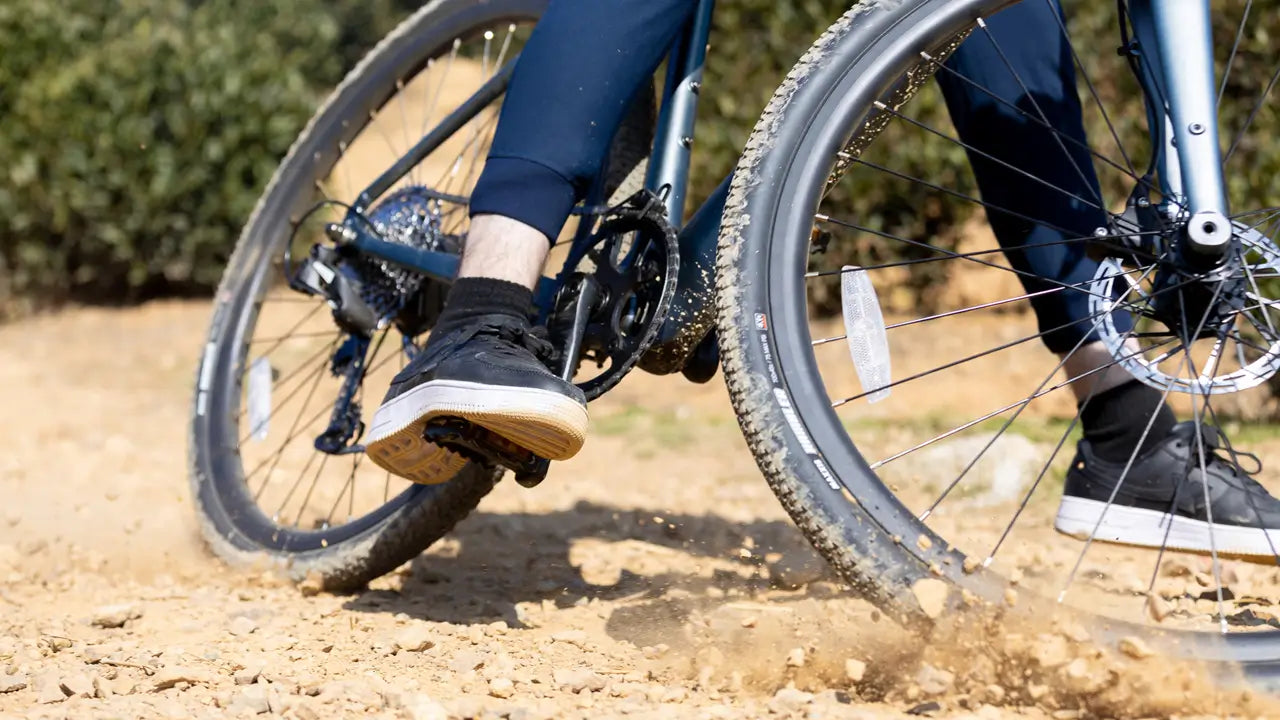What is a Gravel Bike: Exploring the World of Adventure Cycling
The world of cycling is as dynamic as it is broad, offering a multitude of disciplines for the wheels to embrace. In recent years, a distinct champion has emerged from the pack, the gravel bike, or "adventure bike", a versatile steed designed to take on a variety of terrains. But what exactly is a gravel bike, and why has it carved out such a fervent following among cycling enthusiasts and adventure seekers alike?
Gravel bike is a cool blend of a road bike, mountain bike, and touring bike that makes it perfect for all kinds of adventurous rides. Gravel biking refers to cycling on off-road terrain that includes dirt tracks, small rocks, and even gravel roads. To handle such terrains, you need a bike that is designed to withstand this unique environment. And this is where the gravel bike comes in, unlike other bikes that are made for specific terrains, the gravel bike is an all-rounder that can handle various terrains, providing you with an exciting and adventurous experience.
Defining the Gravel Bike in a Road-Centric World
Key Features that Command the Trail
-
Design and Features

-
The Riding Experience
-
Versatility
Gravel vs. Road vs. Mountain: How They Differ

Gravel bikes carve the middle ground, offering the speed and efficiency of a road bike, with the added stability and capability to venture off the beaten path – a true all-rounder. While gravel bikes may not be as speedy on the road as their sleek road bike counterparts, they often feature a more relaxed riding position and are significantly faster over rough terrains than a standard road bike due to their enhanced grip and cushioning.
Although it looks similar to a conventional road bike, gravel bike geometry is designed for more stable handling off-road. That normally means a longer wheelbase and slacker angles for the frame and forks.
The All-Terrain Benefits of Gravel Biking
Embracing the gravel bike means opening up a world of opportunity. Gravel cycling is not only about the thrill of speed; it's also about the freedom to explore remote and beautiful locations. Gravel bikes enable riders to tackle a rich variety of landscapes, combining stretches of pavement with secluded gravel routes, forested fire roads, and even the more well-trodden paths of the cyclocross circuit. Named after the surfaces they negotiate, gravel bikes give cyclists the chance to pursue 'gravel grinding' – journeys that mix endurance, exploration, and a hint of competitive spirit.
The benefits extend beyond mere versatility. The bikes' ability to absorb the bumps and jolts of rough surfaces means less rider fatigue over long distances. Their handling characteristics also provide a confidence-inspiring ride, whether dodging potholes in the urban jungle or navigating the hairpin turns of a mountain descent. Riders find that these bikes encourage a more adventurous spirit, sparking the desire to chase destinations and experiences that might otherwise be overlooked or inaccessible.
In the Saddle: The Gravel Bike Experience
Gravel biking is not just a sport but a lifestyle. It invites riders to stay curious, to seek out the roads less traveled, and to be intimately in touch with the natural surroundings. Every ride on a gravel bike is an adventure waiting to unfold, often with surprises just around the next bend.
For those who are already avid cyclists, a gravel bike can offer a refreshing change of pace, a new challenge, or a novel way to experience their favorite pastime. And for those new to cycling, the accessible nature of gravel bikes and the sheer breadth of riding options they offer can make taking up the sport an even more tantalizing prospect.
Gravel bikes have redefined what it means to ride a bicycle – they're not just tools for sport or commuting, but vessels for experiences and gateways to exploration. So, if you find yourself longing for a new path or a fresh challenge, perhaps it's time to consider the gravel bike – your ticket to a world of adventure cycling. After all, with the right gravel bike, the estion won't be 'where can I ride?' but 'where can't I?'
Choosing Your Adventure Companion
#1 Frame the Foundation: Material Matters
The skeleton of any bike, the frame, is where form meets function. It determines the bike's weight, comfort, and the overall feel of the ride. When choosing a gravel bike, you'll find frames predominantly crafted from three materials - aluminum, carbon fiber, and steel - each carrying its benefits and trade-offs.
Aluminum frames are renowned for their lightness and are often the budget-friendly option, perfect for those who seek performance without breaking the bank. On the other hand, carbon fiber frames, although pricier, offer superior comfort over long distances and possess impressive shock-absorbing qualities, making them ideal for riders prioritizing a smooth ride.
For the traditionalists and the rugged riders, steel frames might be the call. They're the heaviest of the three materials but provide an unmatched durability against aggressive riding conditions. Moreover, steel offers a forgiving ride quality, making it particularly desirable for bikepackers and long-distance tourers who often prioritize comfort over speed.
#2 Gear Up: Deciphering the Drivetrain
A bike's drivetrain is its powerplant, and selecting the right one is crucial to ensuring you have the right gear for the terrain. Gravel bikes typically offer a range of drivetrain configurations, from the simplicity of a 1x system to the versatility of a double chainring setup.
The 1x system, featuring a single chainring and a cassette with a wide range of gears, has emerged as a favorite among gravel riders for its low maintenance and clutter-free design. It is especially suited for the undulating terrain of gravel routes, providing ample choices for steep climbs and high-speed descents.
Alternatively, bikes equipped with a double chainring setup may offer a wider gear range, with smaller intervals between each gear. This can be advantageous for extreme off-roaders or those who often switch between steep climbs and fast flats, where finding the optimal cadence is key.
#3 Dialing In: Components and Quality

#4 Sizing It Up: Fit and Rideability
#5 The Look and Feel: Your Gravel Bike, Your Style
Lastly, consider the aesthetic appeal of your gravel bike. While it may not directly impact performance, a gravel bike that resonates with your style and personality can enhance your connection to the ride. Some might prefer the understated elegance of a classic color scheme, while others might be drawn to the futuristic allure of a high-gloss carbon fiber frame.
Furthermore, customizability should be a factor in your decision-making process. Does the bike allow for different handlebar styles or seat post adjustments? The ability to tweak the bike to your preferences over time is an important aspect, as your adventure riding evolves, so too should your cycling set-up.
#6 The Final Touch: Budget
Conclusion: Your Gravel Epic Awaits
In the vast landscape of adventure cycling, the gravel bike stands as a versatile and dependable ally, ripe for exploration and ready for the road less traveled. With careful consideration of frame material, drivetrain, components, fit, and personal flair, you can ensure that your chosen companion is not just a means of transportation, but a catalyst for the most memorable journeys.
Selecting the right gravel bike is a deeply personal choice, as it should align with your individual riding needs, body geometry, and most importantly, your adventure spectrum.
















